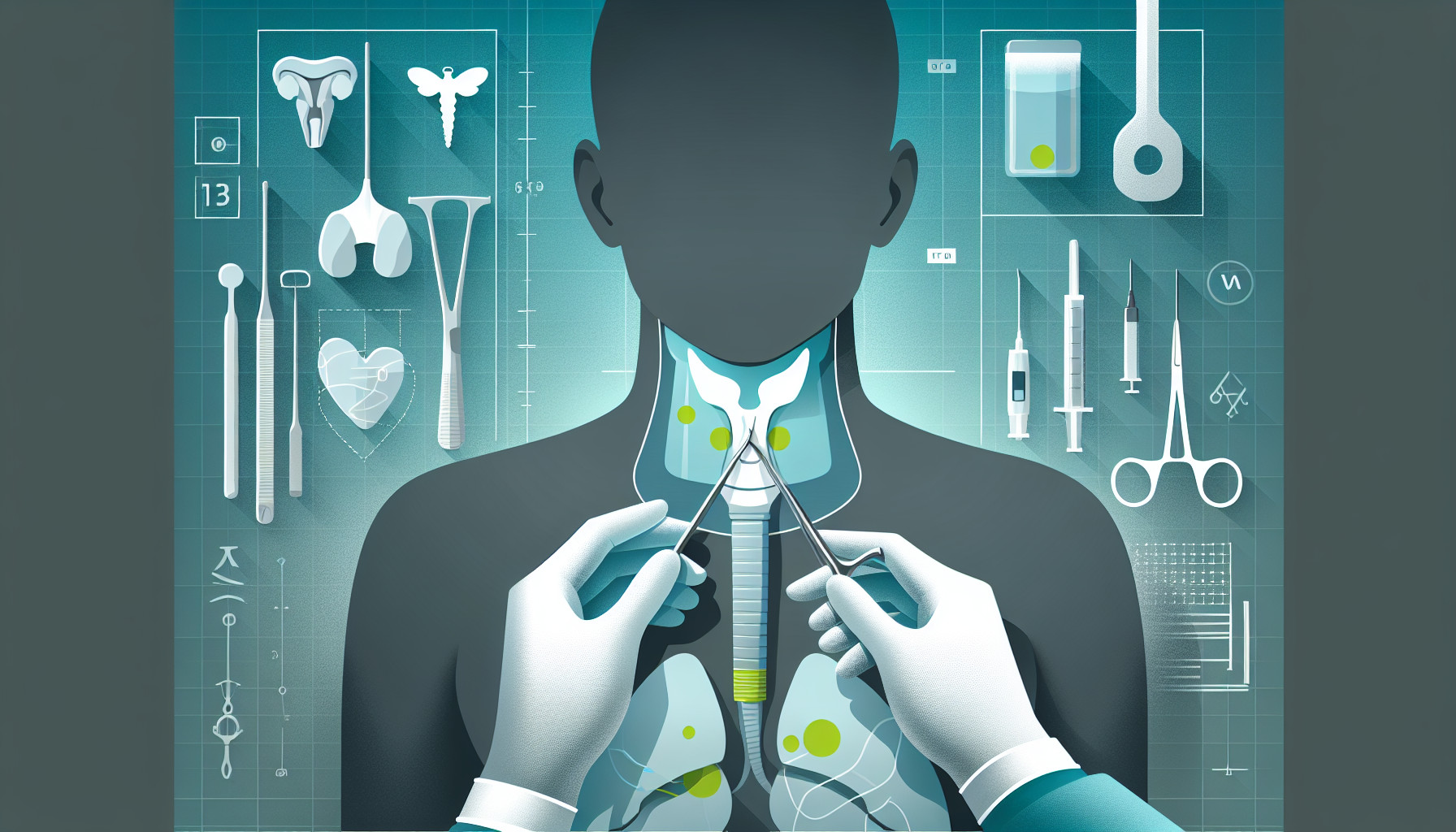Our Summary
This research paper is about a study that looked at the benefits of using near-infrared autofluorescence (NIRAF) technology during total thyroidectomy surgeries. A total thyroidectomy is a procedure where the entire thyroid gland is removed, and it often leads to a condition called hypocalcemia, which is a lower-than-normal level of calcium in the blood.
The researchers analyzed seven different clinical trials that included 1,437 patients. They found that using NIRAF technology during surgery reduced the risk of postoperative hypocalcemia. It also decreased the chances of permanent damage to the parathyroid glands, which are small glands near the thyroid that play a critical role in maintaining the body’s calcium levels. Furthermore, the use of NIRAF also lowered the risk of accidentally removing the parathyroid glands during the thyroidectomy.
In simple terms, the use of NIRAF technology during total thyroidectomy surgeries can help to prevent complications after the operation, such as low blood calcium levels and damage to the parathyroid glands.
FAQs
- What is near-infrared autofluorescence (NIRAF) technology and how is it used in total thyroidectomy surgeries?
- How does the use of NIRAF technology during total thyroidectomy surgeries reduce the risk of postoperative hypocalcemia?
- Can the use of NIRAF technology prevent accidental removal of the parathyroid glands during thyroidectomy?
Doctor’s Tip
A helpful tip a doctor might tell a patient undergoing a thyroidectomy is to discuss the use of NIRAF technology with their surgeon. This advanced imaging technique can help reduce the risk of complications during and after surgery, leading to a smoother recovery process. It’s important for patients to be informed and advocate for their own health by asking about the latest technologies that can improve their surgical outcomes.
Suitable For
Patients who are typically recommended for thyroidectomy include those with:
- Thyroid cancer
- Large goiters causing difficulty breathing or swallowing
- Hyperthyroidism that cannot be controlled with medication
- Thyroid nodules causing symptoms or suspicion of malignancy
- Recurrent thyroid nodules
- Graves’ disease
Overall, the use of NIRAF technology during total thyroidectomy surgeries can benefit a wide range of patients undergoing thyroid surgery by reducing the risk of postoperative complications and improving surgical outcomes.
Timeline
Timeline of a patient’s experience before and after thyroidectomy:
Before surgery:
- Patient undergoes preoperative testing and evaluation to determine if thyroidectomy is necessary
- Patient receives instructions on preoperative preparation, such as fasting before surgery
- Patient may be prescribed medication to manage thyroid hormone levels or calm nerves before surgery
- Patient meets with surgeon to discuss procedure and potential risks and complications
During surgery:
- Surgeon uses NIRAF technology to assist in identifying and preserving the parathyroid glands
- Thyroid gland is removed under general anesthesia
- Surgery typically lasts 1-2 hours
After surgery:
- Patient is monitored in recovery room for any immediate complications
- Patient may experience temporary hoarseness or difficulty swallowing
- Patient is monitored for signs of hypocalcemia, such as numbness or tingling in extremities
- Patient may need to stay in the hospital for 1-2 days for observation
- Patient is prescribed calcium and vitamin D supplements to prevent hypocalcemia
- Follow-up appointments are scheduled to monitor thyroid hormone levels and calcium levels
Overall, the use of NIRAF technology during thyroidectomy surgery can improve outcomes for patients by reducing the risk of postoperative complications and preserving the function of the parathyroid glands.
What to Ask Your Doctor
Some questions a patient should ask their doctor about thyroidectomy and the use of NIRAF technology include:
- What is a total thyroidectomy and why is it recommended for me?
- What are the potential risks and complications of a total thyroidectomy?
- How does NIRAF technology work during the surgery?
- How can NIRAF technology help reduce the risk of postoperative hypocalcemia and damage to the parathyroid glands?
- Are there any potential side effects or drawbacks of using NIRAF technology during the surgery?
- How experienced are you in using NIRAF technology during total thyroidectomy surgeries?
- What is the success rate of using NIRAF technology in preventing complications compared to traditional methods?
- Will I need any additional monitoring or treatment after the surgery if NIRAF technology is used?
- How long is the recovery process after a total thyroidectomy with the use of NIRAF technology?
- Are there any alternative treatment options or technologies that I should consider for my thyroidectomy?
Reference
Authors: Canali L, Russell MD, Sistovaris A, Abdelhamid Ahmed AH, Otremba M, Tierney HT, Triponez F, Benmiloud F, Spriano G, Mercante G, Randolph GW. Journal: Head Neck. 2025 Jan;47(1):225-234. doi: 10.1002/hed.27900. Epub 2024 Aug 5. PMID: 39104194
